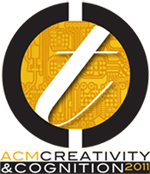Guy Claxton
Creative-Mindedness: When Technology Helps and When It Hinders
Abstract: Creative-mindedness is the broad disposition to come up with a good idea when you need one, and work it through. It relies on a number of factors: the absence of beliefs that might cause one to neglect or misrepresent useful aspects of one’s own mind; the possession of a rich and partly unsystematic neural compost of experience, snippets and understanding; an intuitive grasp of when and how to think clearly and precisely, and when and how to think vaguely and dreamily; an awkward but irresistible sense of wonderment and scepticism; patience and persistence in the face of confusion and frustration; and the ability to amass and deploy material, spatial, technological and social resources in a way that is fluidly appropriate to the evolving nature of the creative project. This last factor is perhaps the most important of all: the presence of mind to orchestrate both one’s own mental resources and habits, and the affordances of the outside world, in a way that optimises their ability to mesh with themselves and with each other. Creativity means being smart about yourself, smart about the world, and smart about how to fit the two together.
Sara Diamond
Artists & Designers: An Experiment in Data Visualization
Abstract: OCAD University’s strategic plan Living in the Age of Imagination places a priority on focusing the lenses of art, design and media on contemporary issues and practices outside of the traditional boundaries of art and design. This has resulted in a myriad of innovative curriculum and research initiatives of specific relevance to HCI. For example in concert with led partner York University, the University of Toronto and a set of industrial partners OCAD University has created the Centre for Innovation in Information Visualization and Data Driven Design (CIV/DDD), a research hub for the development of next-generation data visualization techniques and their underlying information processing and communication technologies (ICT). This centre is the focus of this talk. The idea was that by bringing an unprecedented number of interdisciplinary artists, designers, media makers, humanist analysts and social scientists into the research partnership we would develop new paradigms of data enquiry, user-centered visualization models, and information processing and display technologies.
Ben Shneiderman
Social Discovery Framework: Building Capacity and Seeking Solutions
Abstract: While journalists often portray discovery as the thrilling insight of a brilliant individual, many discoveries require years of work by competing and collaborating teams. Often large amounts of foundational work are necessary and dialogs among participants help clarify goals. The Social Discovery Framework suggests that (1) there are important processes in building capacity and then seeking solutions and (2) those that initiate requests are often as important as those who seek solutions. The implications of the Social Discovery Framework are that improved social tools to build capacity, initiate requests, and support dialog would accelerate the discovery process as much as the more visible tools for individuals seeking solutions.
This keynote is partly sponsored by the Best Creative Communication Award.
Atau Tanaka
Music One Participates In
Abstract: Digital music has undergone fundamental shifts – it has gone real time, it has become interactive, it has become miniaturized, and completely democratized. I’ll map out my personal trajectory in this time to look at broader evolutions in the field with sensors, networks, and mobility. These are not just technological changes, but changes that bring about shifts in musical approaches. Form factors change, analogue is reconciled with digital, and new directions in Open Source and DIY culture continue to challenge our assumptions on what it means to be an artist, composer, performer, participant, in these evolving musical/technological landscapes.

